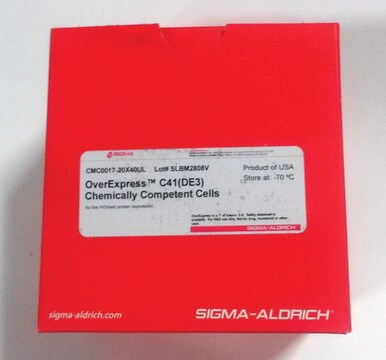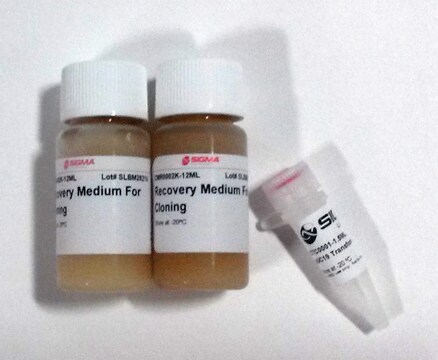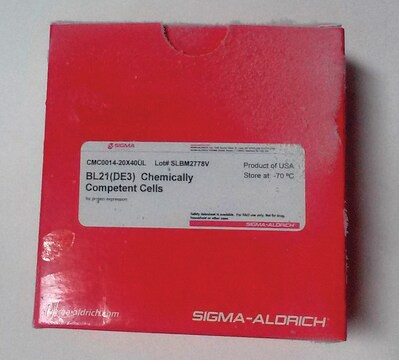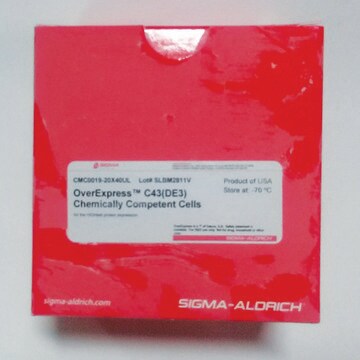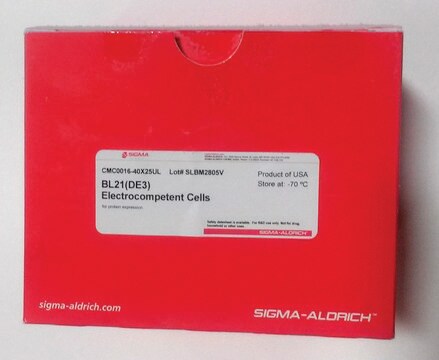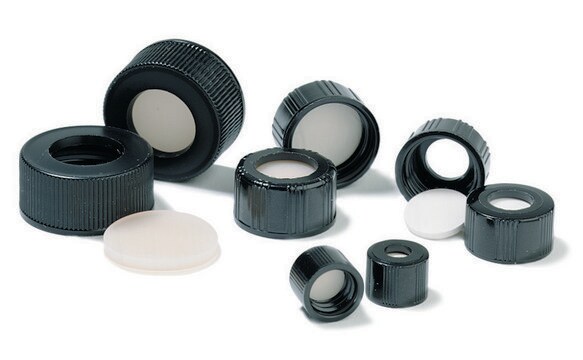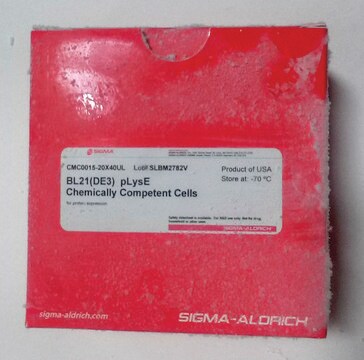69041
B834(DE3) Competent Cells - Novagen
Escherichia coli, rod shaped
Sinónimos:
Competent cells
About This Item
Productos recomendados
Nombre del producto
B834(DE3) Competent Cells - Novagen, B834 is the parental strain for BL21. These hosts are methionine auxotrophs and allow high specific activity labeling of target proteins with 35S-methionine and selenomethionine for crystallography.
biological source
Escherichia coli
manufacturer/tradename
Novagen®
storage condition
OK to freeze
avoid repeated freeze/thaw cycles
growth mode
adherent or suspension
morphology
rod shaped
technique(s)
microbiological culture: suitable
cell transformation
transformation efficiency: >2×106 cfu/μg
shipped in
dry ice
storage temp.
−70°C
General description
DE3 indicates that the host is a lysogen of λDE3, and therefore carries a chromosomal copy of the T7 RNA polymerase gene under control of the lacUV5 promoter. Such strains are suitable for production of protein from target genes cloned in pET vectors by induction with IPTG.
This product contains genetically modified organisms (GMO). Within the EU GMOs are regulated by Directives 2001/18/EC and 2009/41/EC of the European Parliament and of the Council and their national implementation in the member States respectively. This legislation obliges us to request certain information about you and the establishment where the GMOs are being handled. Click here for Enduser Declaration (EUD) Form.
Components
•2 × 0.2 ml5 × 0.2 mlB834(DE3)Competent Cells
•2 × 2 ml4 × 2 mlSOC Medium
•2 ng2 ngTest Plasmid
Warning
Other Notes
2. Leahy, D. J., Hendrickson, W. A., Aukhil, I., and Erickson, H. P. (1992) Science 258, 987–991.
Legal Information
Storage Class
10 - Combustible liquids
wgk_germany
WGK 2
Certificados de análisis (COA)
Busque Certificados de análisis (COA) introduciendo el número de lote del producto. Los números de lote se encuentran en la etiqueta del producto después de las palabras «Lot» o «Batch»
¿Ya tiene este producto?
Encuentre la documentación para los productos que ha comprado recientemente en la Biblioteca de documentos.
Nuestro equipo de científicos tiene experiencia en todas las áreas de investigación: Ciencias de la vida, Ciencia de los materiales, Síntesis química, Cromatografía, Analítica y muchas otras.
Póngase en contacto con el Servicio técnico